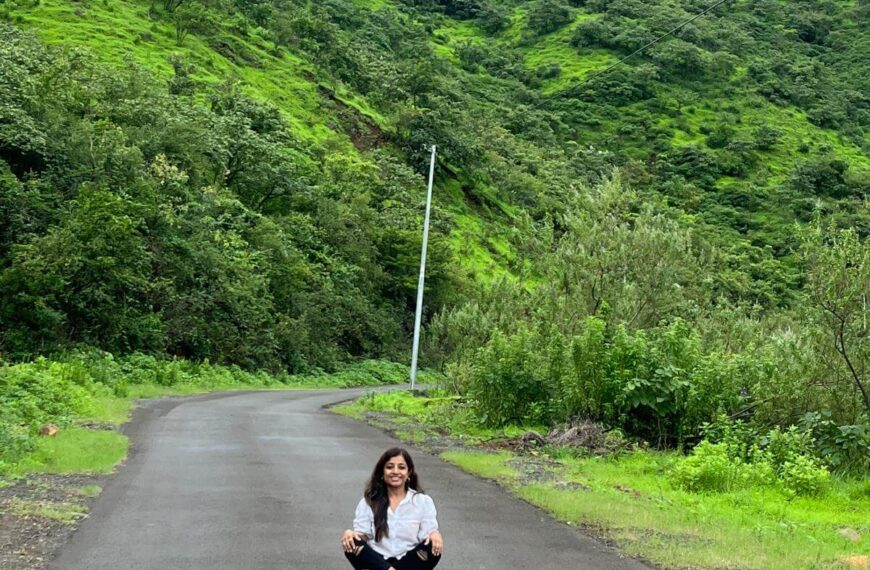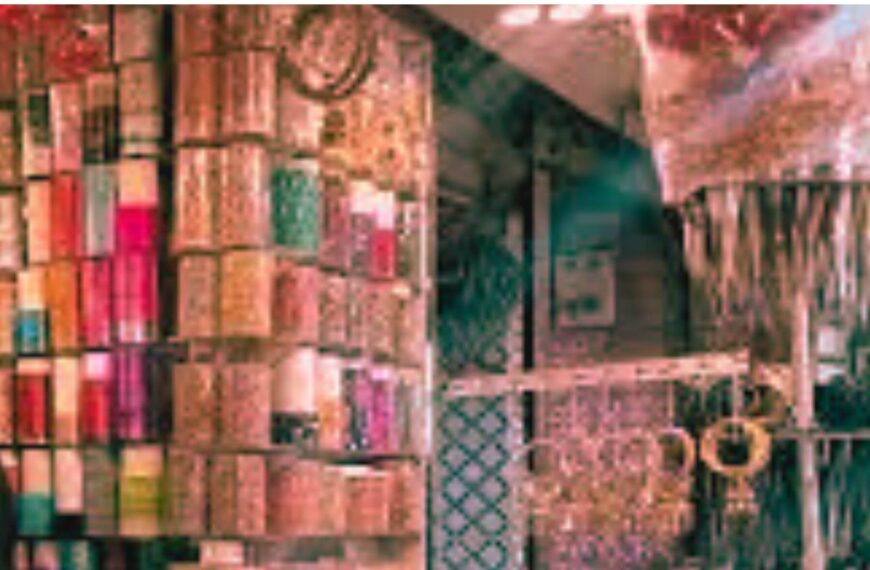Reetwika takes us on a tour of Chitradurga Fort, a lesser known getaway. The birthplace of Ghatotkach is replete with many enchanting tales. A Different Truths exclusive.
 Chitradurga is one of the oldest districts of Karnataka with immense mythological and historic significance, around 250 kilometers north of Bangalore. It was reigned by a series of rulers starting from mythological demons to Vijayanagar empire, Madakari Nayaka kings, Rastrakutas, Tipu Sultan and finally the British. Today, the place is well connected by road with the silicon city and thus we decided to relish a long self-drive. However, irrespective of its rich past, Chitradurga is seldom visited by tourists.
Chitradurga is one of the oldest districts of Karnataka with immense mythological and historic significance, around 250 kilometers north of Bangalore. It was reigned by a series of rulers starting from mythological demons to Vijayanagar empire, Madakari Nayaka kings, Rastrakutas, Tipu Sultan and finally the British. Today, the place is well connected by road with the silicon city and thus we decided to relish a long self-drive. However, irrespective of its rich past, Chitradurga is seldom visited by tourists.
It was a chilly winter weekend. Bypassing the city traffic of Bangalore, we took NICE ring road and then drove through a greasy patch of 213 kilometers via Tumkur. Midway, we took couple of quick tea stops with a lunch break at Hiriyur.
Historical Destination
Our destination was an ancient hill fort with significant mentions in Mahabharata. Located right at the heart of Chitradurga district town on the banks of Vedavati River, it is one of the prehistoric forts of the world. Later during British rule, it was renamed to ‘Chittaldrug’.
Stunningly, the town was an overcrowded bazaar full of monkeys and unexpectedly narrow one-way lanes around it.
The on-road driving legends and directions were very helpful, and we reached within six hours. The overall topography was rocky and undulating due to the hilly terrains. Stunningly, the town was an overcrowded bazaar full of monkeys and unexpectedly narrow one-way lanes around it. We never anticipated a second-tier district to have such heavy traffic though.
We had no prior hotel booking, rather we preferred to directly go, look and check-in at a suitable lodging. A hotel looked okay to meet our budget accommodation needs for two nights. Honestly speaking, it was international only by name and not by amenities. The hotel guard personally carried the keys of the backside garage with him who could understand only Kannada. So, explaining him to open or lock the garage gate to park our car was a big pain.
Internal roads were full of big boulders all around which made our drive harder.
Next morning, we woke up early as we had plans to visit the much awaited Chitradurga Fort. After a light breakfast we started off. The hotel was little short of seven kilometers from the fort. Internal roads were full of big boulders all around which made our drive harder. However, we made our way, asking directions from the passersby.
Festivity at the Fort
By 9 am we had reached the fort entrance. Getting there we could feel a festive aroma in the whole atmosphere. Fortunately, we were there on the auspicious days of Durgotsav – a three-day celebration inside the fort, which occurs once in every five years. Innumerable vehicles had already flooded the parking area. We somehow managed a chunk of the roadside corner to park our car.
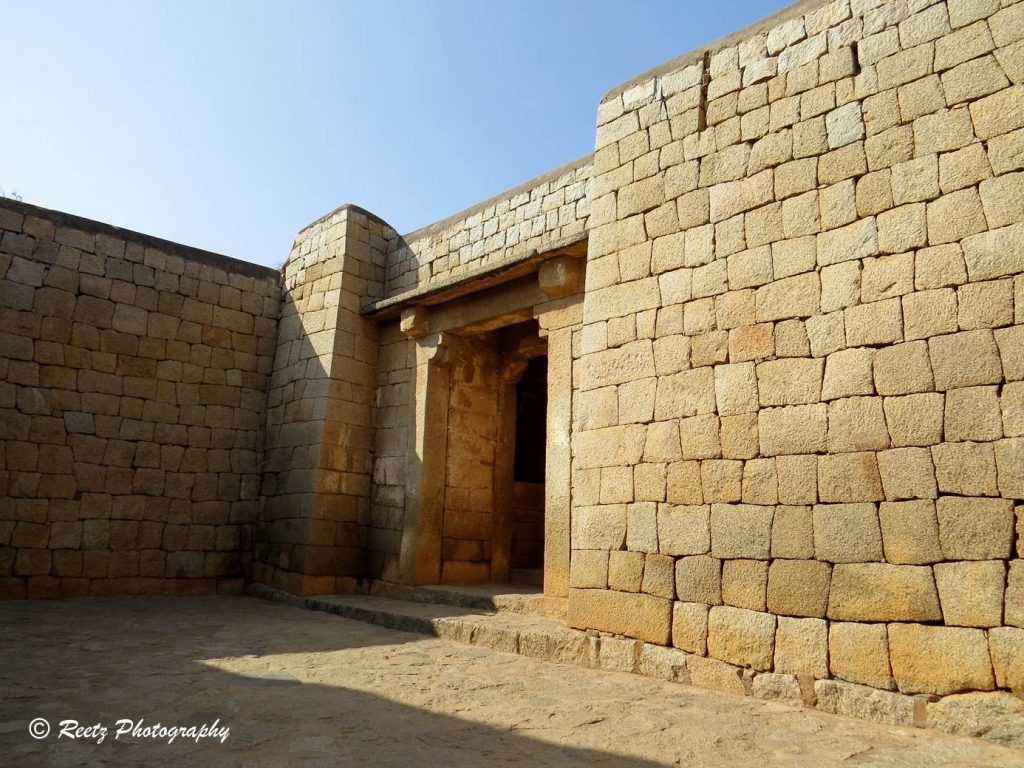
The ticket counter was located outside the main gate and they allowed to carry still camera against a nominal charge. There were no photography restrictions as such. Right at the entrance, a marble plaque read ‘Chitradurga’, warmly welcoming the visitors inside.
It was an eye-catching stone castle lavishly built on top of an umbrella-shaped lofty hill.
‘Chitra-Durga’ is an old Kannada phrase (where ‘Chitra’ means ‘Picturesque’ and ‘Durga’ means ‘Castle’ when translated in English). As the name suggests, the fort was really scenic. It was an eye-catching stone castle lavishly built on top of an umbrella-shaped lofty hill.
Architectural Elusiveness
As we walked through the entry portico, gigantic stone walls beckoned us to the inner fortification. After crossing three serpentine zig-zag turns, each opening to the next inner level, we entered the central citadel. The walls were built with such architectural elusiveness that one cannot see the interior at one shot. The idea behind building such a ramification was to decrease visibility and prevent running speed of king’s enemy if attempted to attack the fort. At the end of third porch, it opened to a wide-open space with the ‘bandi-khane’ (jail) on right, a gigantic water reservoir on left and the foothills of 280 steps to the main fort in front.
The walls were built with such architectural elusiveness that one cannot see the interior at one shot. The idea behind building such a ramification was to decrease visibility and prevent running speed of king’s enemy if attempted to attack the fort.
We were already breathless by the time we reached the central citadel. It was almost an hour’s trek from the starting point. We wanted a much-needed break before commencing the final hike to the hilltop. The rising sun was sapping us off, unlike winter mornings. To rest our limbs, we found ourselves a shady corner near the jail area. As we gossiped within ourselves, a mid-aged dark-complexioned obese man approached us and introduced himself as a registered guide. Finding us to be Kannada illiterates, he offered to articulate thrilling stories about the fort in a south Indian Hinglish style. We liked his polite approach and so agreed to take him along.
He started off with the architectural facts about the Chitradurga fort – it houses 18 ancient temples, a mosque, 19 front side entries, 38 rear entrances, 4 secret entrances, a jail, a royal palace, stone swings, a holy Math (ashram), ramparts, granaries, oil pits, and huge water reservoir. Realising us losing interest in the hard facts and figures, he quickly switched the tone of his contents and started narrating a legendary ancient story about the fort.
Epic Legacy
During the epic times of Mahabharata, two man-eating demons used to dominate the Chitradurga hill – Hidimba (brother) and Hidimbi (sister). Hidimba had left the villagers terror-stricken, while his sister Hidimbi loved peace and had soft corners for the poor people. During the exile of Pandavas, Bhima gave a tough fight to Hidimba and finally succeeded in killing him. His body was clandestinely buried inside the fort premises and even today the big boulders are believed to bear a testimony to Hidimba’s covert entombment.

Hidimba had left the villagers terror-stricken, while his sister Hidimbi loved peace and had soft corners for the poor people.
However, in the journey, Bhima grew love interest on Hidimbi and they got married at the hilltop. It was right here their son Ghatotkach was born and brought up. Years later, to commemorate their mythological love story, a towering temple was built by the Vijaynagar Hindu kings at the summit of the castle which is now known as Hidimbeswara Temple – our final destination for the day.
…perhaps due to the venerable stony architecture of the fort, the temperature was truly soothing inside the citadels, making our trek feel easier than reality.
With many such gripping periodical stories, our guide kept steering us along the rocky trek, taking intermittent breaks in between. I must say, perhaps due to the venerable stony architecture of the fort, the temperature was truly soothing inside the citadels, making our trek feel easier than reality. ‘Natural AC’ was what our guide coined to describe the pleasing ambiance.
Climbing up for seventy-five more steps, he showed us a secret opening between two big boulders and narrated another fascinating story about an old lady called Obavva. She was the wife of the security guard of the fort during the reign of Madakari Nayaka. Hyder Ali’s forces tried to furtively invade the fort through this hole.
Brave Woman Slays an Army
That day, when Obavva’s husband had gone for lunch, she was substituting him. Suddenly she found a couple of soldiers trying to make their way through the hole. She had nothing to fight against them except a tarnished ‘onake’ (a small farming chisel typically used by Kannada farmers during those days). With that, she kept slaying Hyder Ali’s warriors one by one as they struggled to enter the fort through the small opening and silently threw their corpses into an adjacent ‘tanniru doni’ (a black well). Over a very short period of time most of the soldiers fell prey to her, without knowing the ill fate of their successors. Obavva’s husband, upon his return was stunned to find her with a blood bathed chisel and hundreds of corpses around her.
That day, when Obavva’s husband had gone for lunch, she was substituting him. Suddenly she found a couple of soldiers trying to make their way through the hole.
Together they killed almost all the soldiers. Unfortunately, at the end, one of the warriors slaughtered Obavva and her husband. The hole in the rocks remained as a historical witness of the bloodshed even today. We could feel a chill running down our spine visualizing the bloody scene of historic mass carnage.
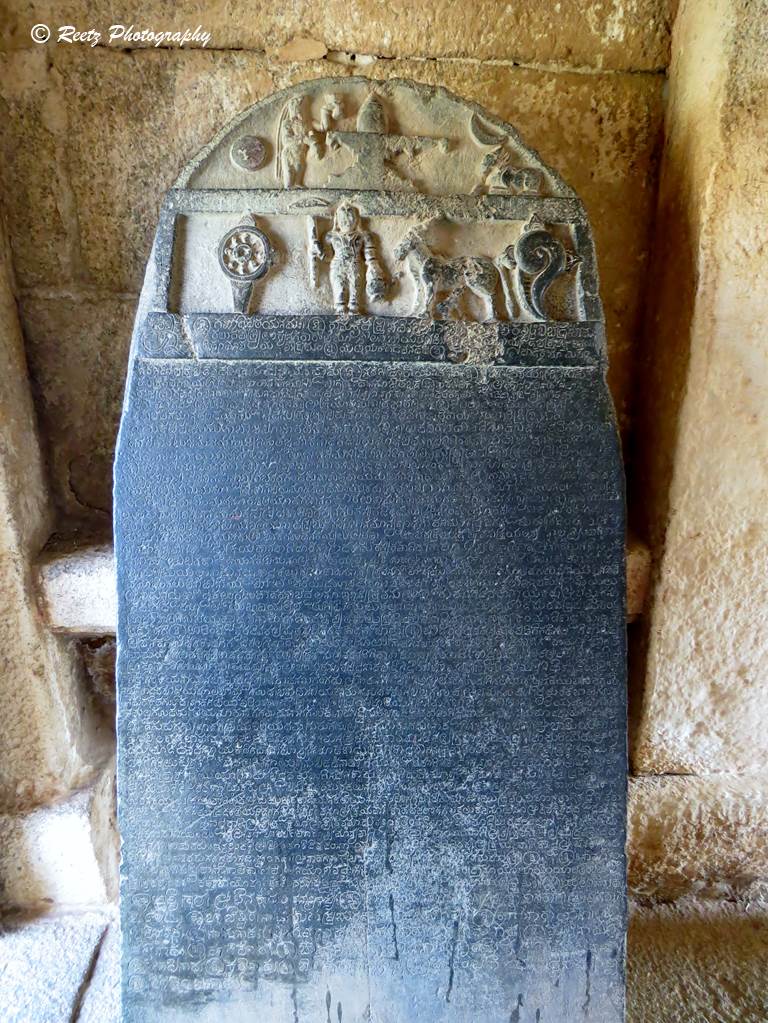
Ascending through the serpentine way for another fifteen steps we reached a small temple dedicated to Lord Ganesh, which is believed to house kinder Ghatotkach’s footsteps, who was a devotee of Baal Ganesh. On the way, we visited a few more temples dedicated to various deities and a mosque built during Tipu Sultan’s reign.
Stone Swings for the Queen
After climbing for over a hundred and fifty steps, we reached the innermost citadel of the fort – opening to the Raja Rani Mahal and Chamundi Temple. A couple of massive royal stone swings used to be the then queen’s play zone. The iron rings had been removed but the structures still stood strong.
Couple of massive royal stone swings used to be the then queen’s play zone. The iron rings had been removed but the structures still stood strong.
Climbing for another eighty steps, we reached the Gopura – the entry portico to the private shell of the fort. On one side were the steps to the Hidimbeswara Temple and the other side leading to the religious hymn charming area called Math housing the Gali Mantapa. At the base of Gopura, there were some engraved ancient designs. Came to know a mind-blowing information from our guide. The designs were made like playboards by the rulers from Vijaynagar Dynasty, which actually depicted different war scenarios. The kings used to practice war tactics by means of small pebbles on these boards as a regal pastime.
We visited the Math before climbing our way through the last fifty flights of stairs to the summit. The steep stepladders were naturally formed of stone cuts with only thin iron rods on either side to take support while climbing – certainly, the toughest part of the trek. There was couple of small turrets midway to take quick rests.
Leopard’s Den
The natural coolness gave relief to our fight against the rising sun. But soon our relief turned to dread when we got to know an electrifying attribute about the place – the Hidimbeswara temple is a leopards’ den. Every afternoon, after the main gate shuts down, couple of leopards takes their nocturnal refuge inside the temple. But the divinity of the place does not allow any violence. The guide too had encountered the feline beauties couple of times during his closing trip but was never been attacked. The fearless tone of the man made us shiver under the burning sun. Later we also got to know from him that there were three bears too who now live in the hole where Obavva had killed Hyder Ali’s soldiers.
…our relief turned to dread when we got to know an electrifying attribute about the place – the Hidimbeswara temple is a leopards’ den. Every afternoon, after the main gate shuts down, couple of leopards takes their nocturnal refuge inside the temple.
There is a dense natural forest at the rear side of the Chitradurga Fort where the animals hunt food during daytime and by evening come back to their dens inside the fort. The main gate is thus closed strictly by 4 pm and no visitors are allowed beyond that.

Panoramic View
Upon reaching the uppermost fort, the entire Chitradurga town could be seen. The view was such a treat to our tired eyes. The temple had some old stone inscriptions, which the guide said to be royal bonds from Rastrakuta’s time. The deity was that of Hidimbi, however, the shrine remains locked under the fort authority’s supervision. Only the priest could open the gate during prayer hours. We took an hour’s breather inside the temple before commencing to descend.
It took us almost two and half hours to climb up to the highest point of the bastion, taking ample breathing breaks in between to enjoy our journey and stopping at the different remarkable spots of the castle. But honestly, if you want to appreciate the entire length and breadth of the fort, keep aside at least three full days to substantially cover the entire area. Nevertheless, thanks to our guide and the weather conditions, it was such a memorable experience. Chitradurga was a truly picturesque fort indeed. 280 steps, worth trekking!
Photos by the author

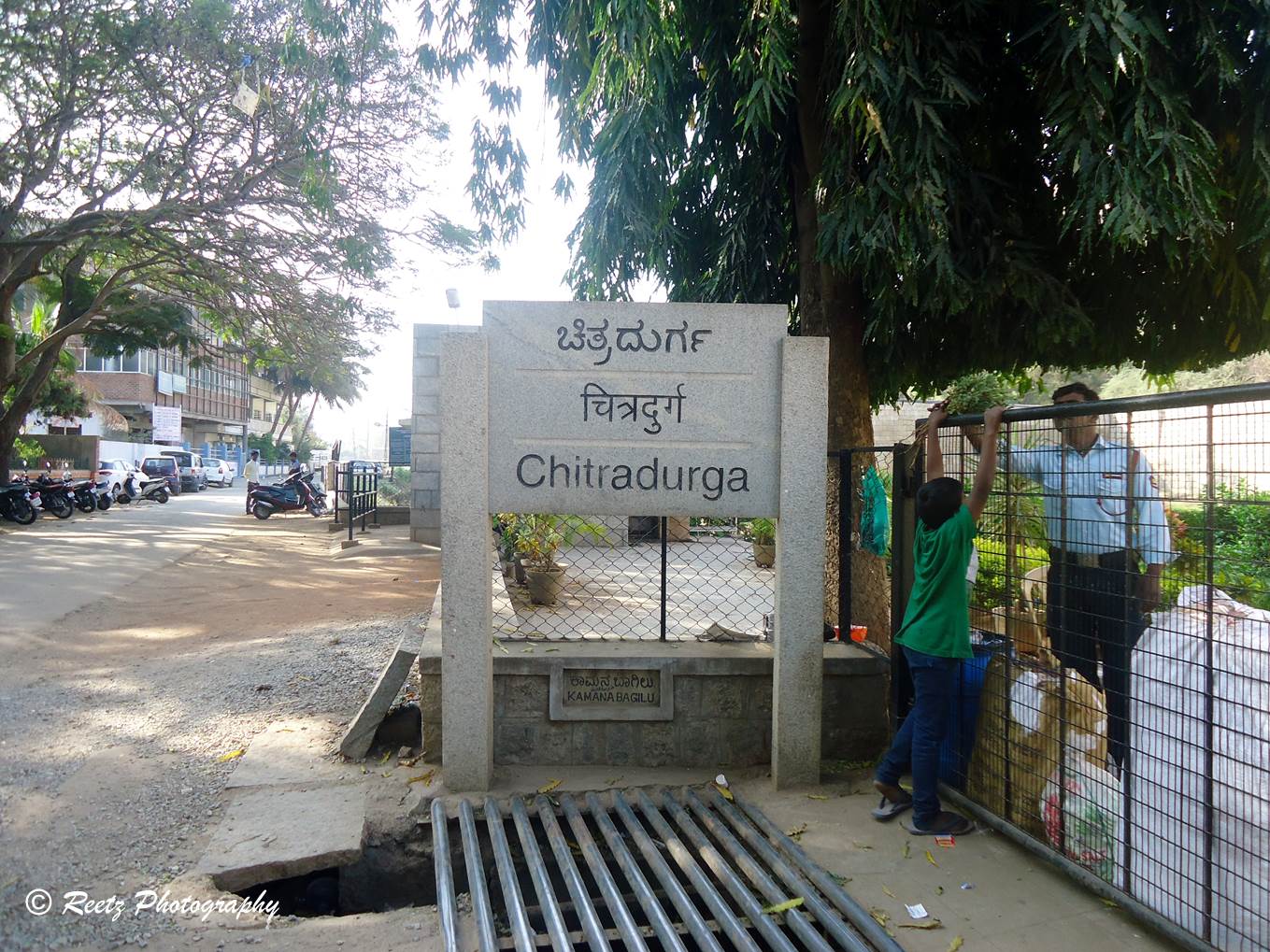
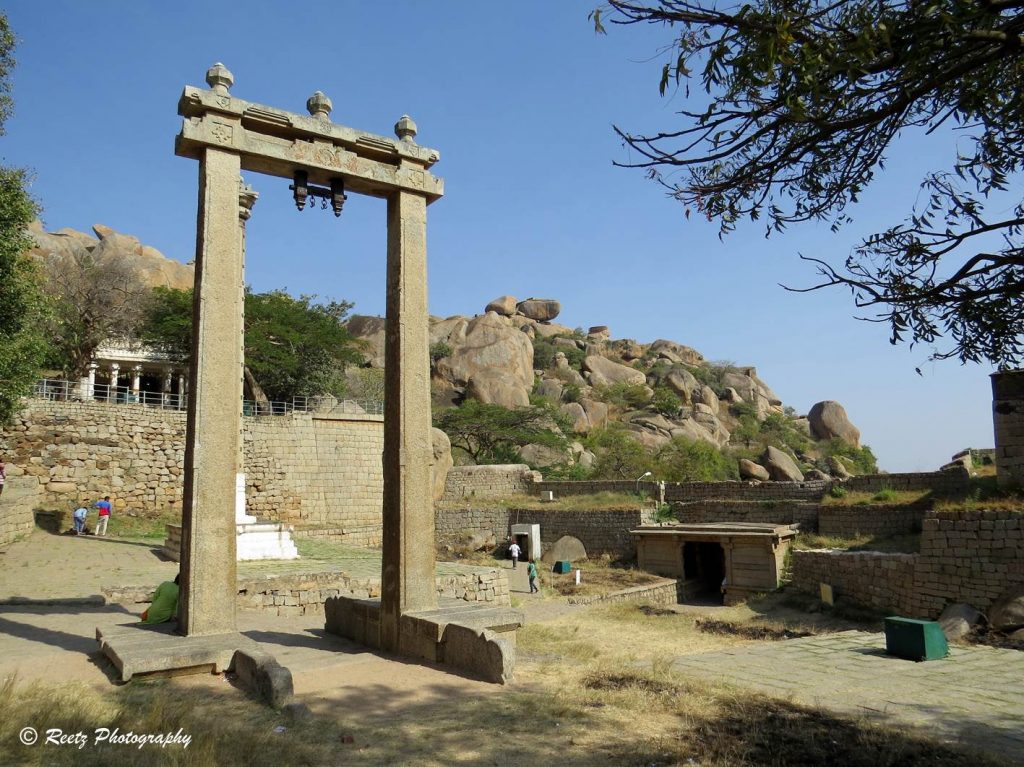
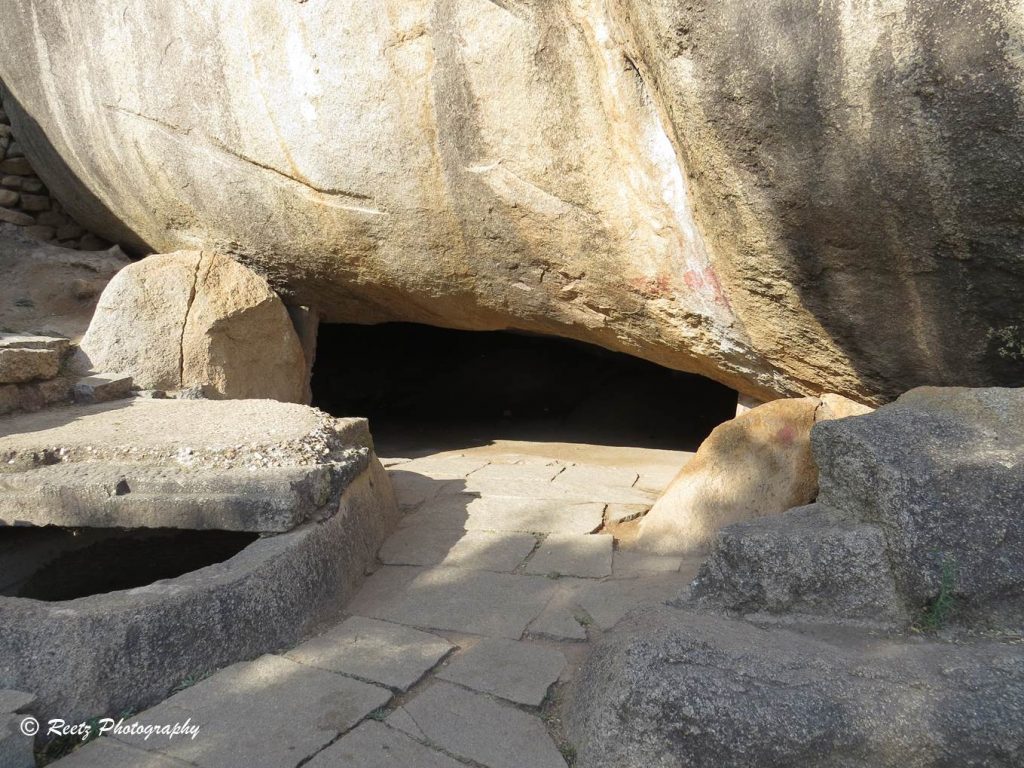
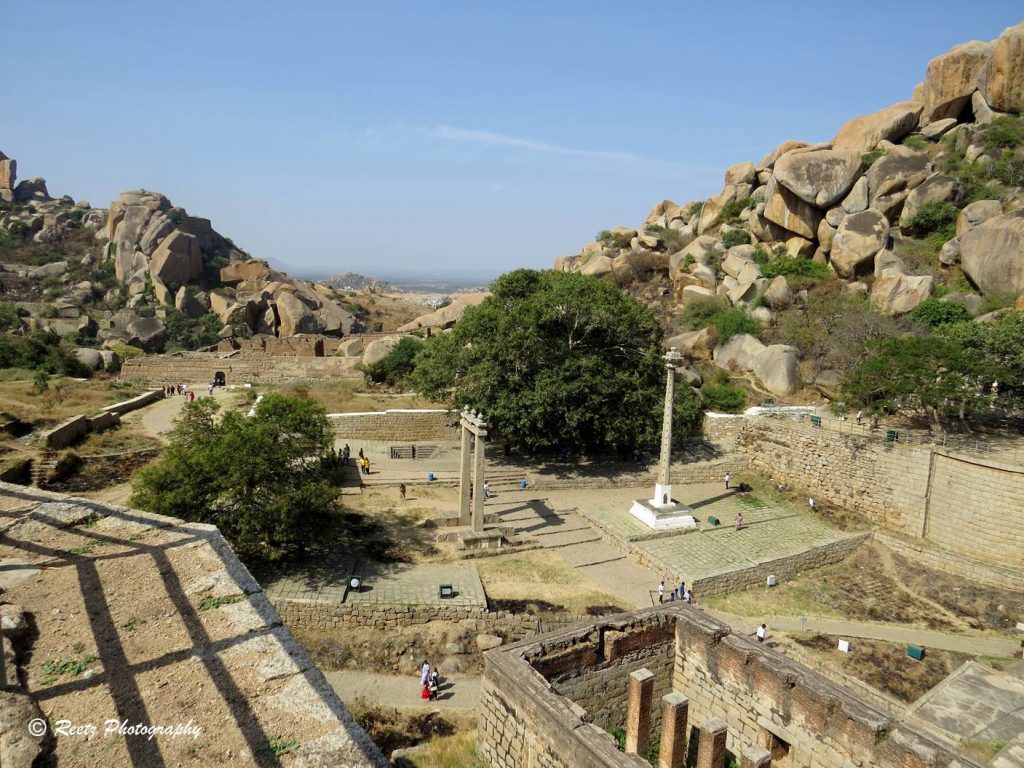
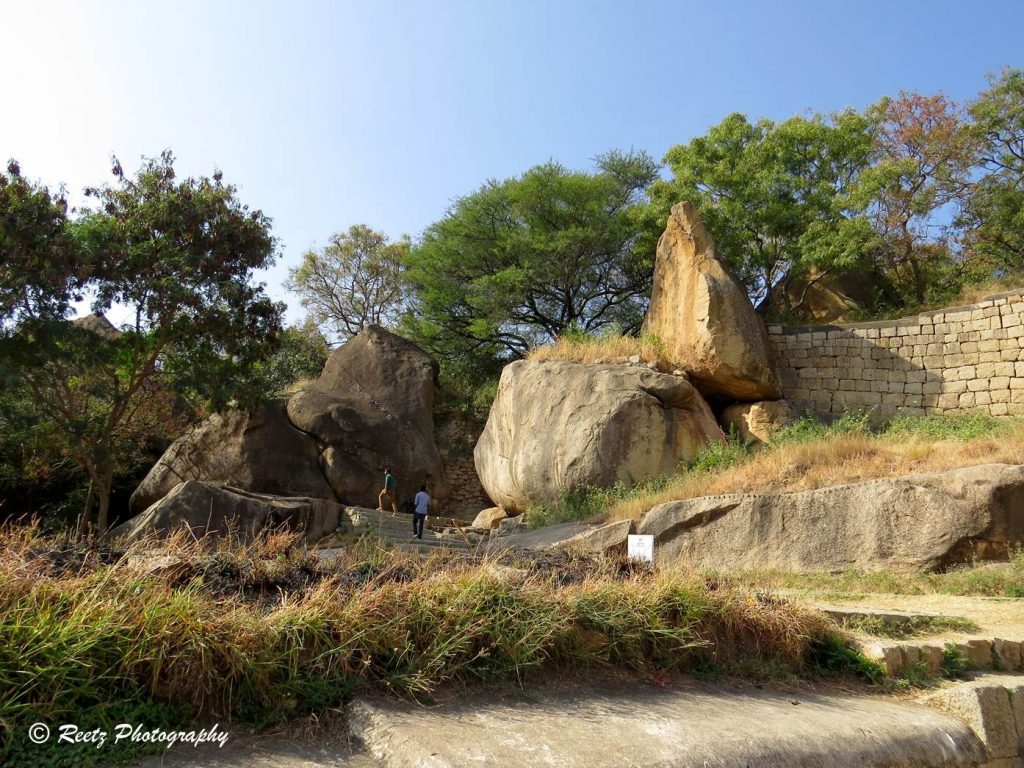
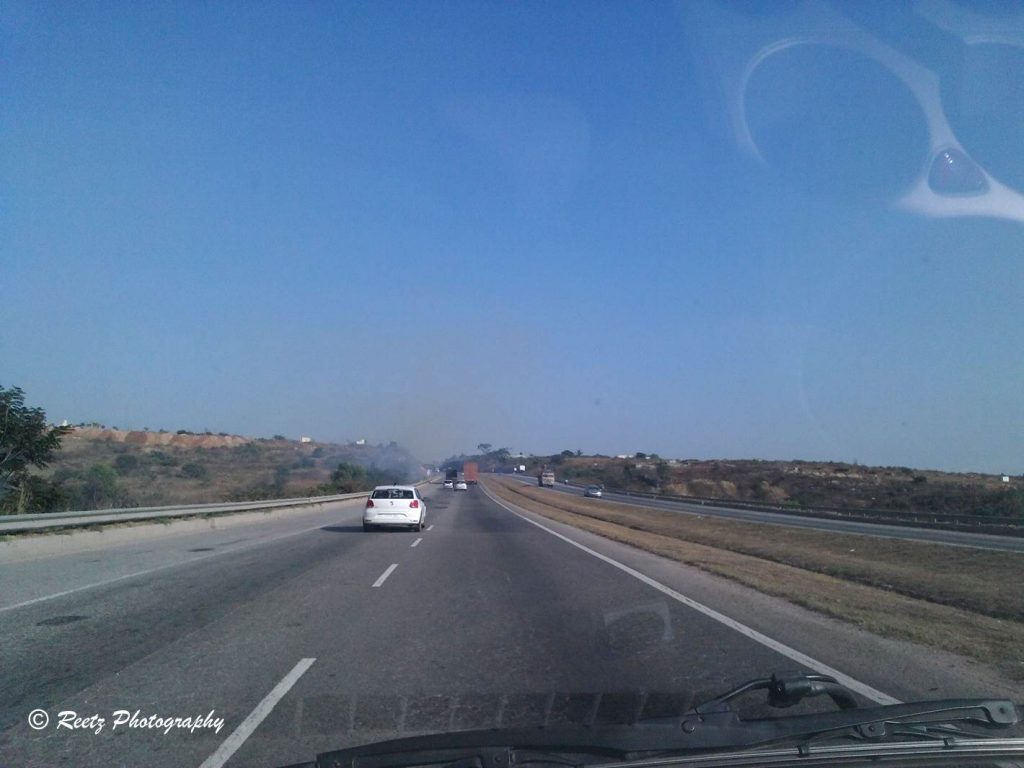
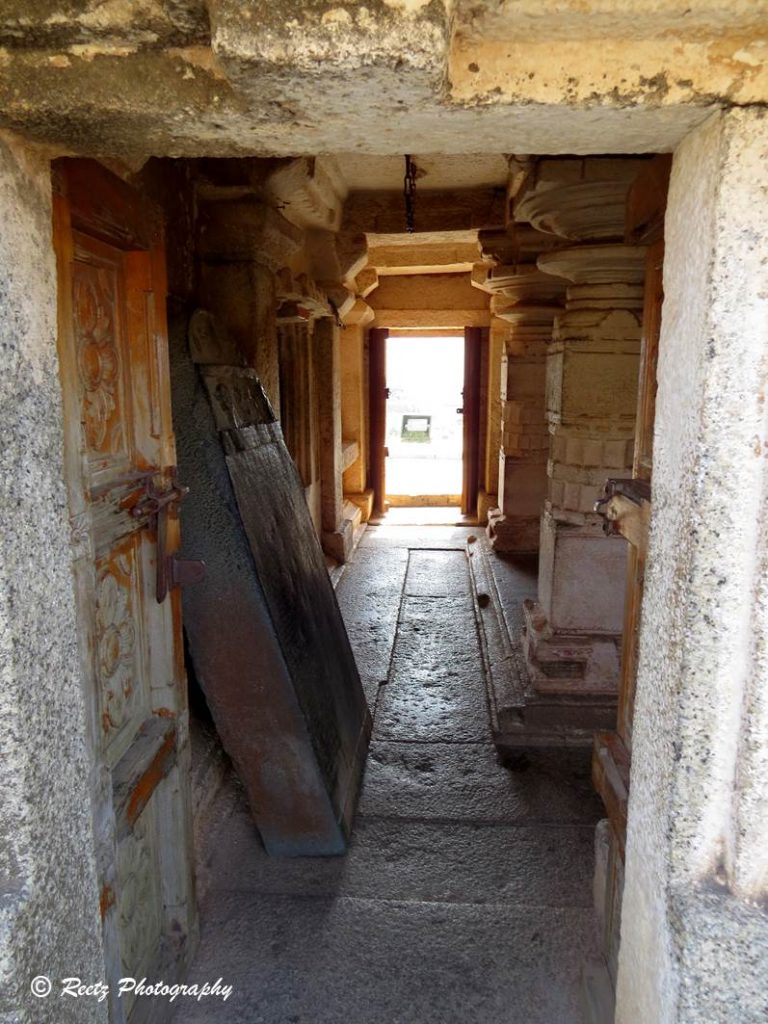
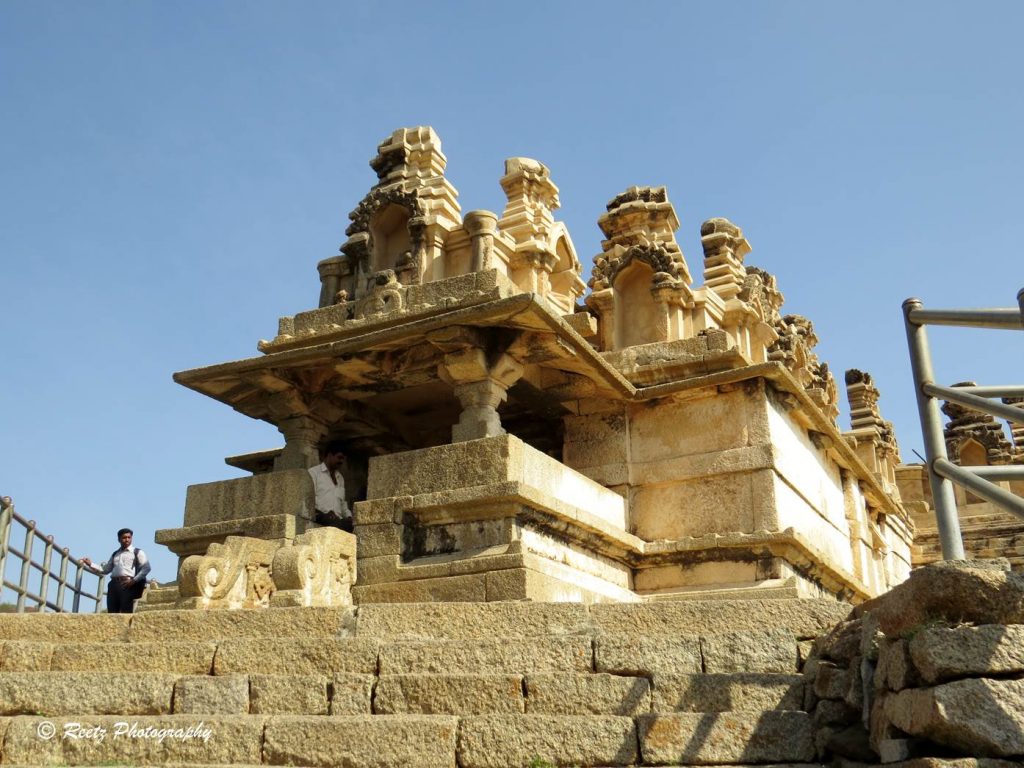
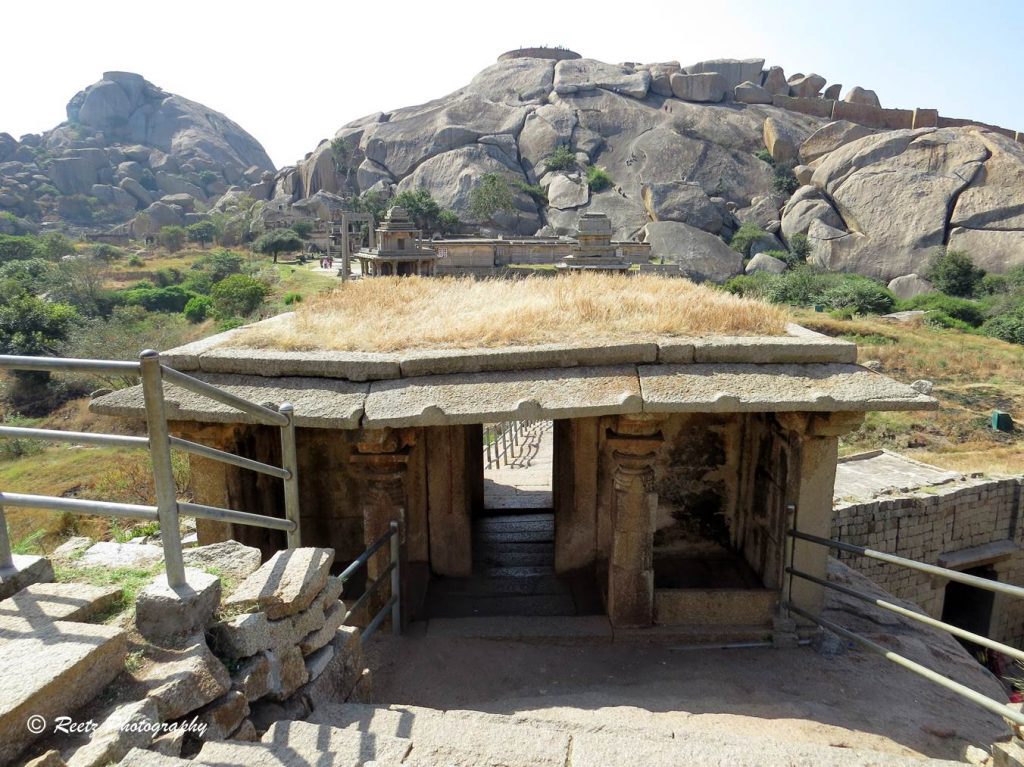
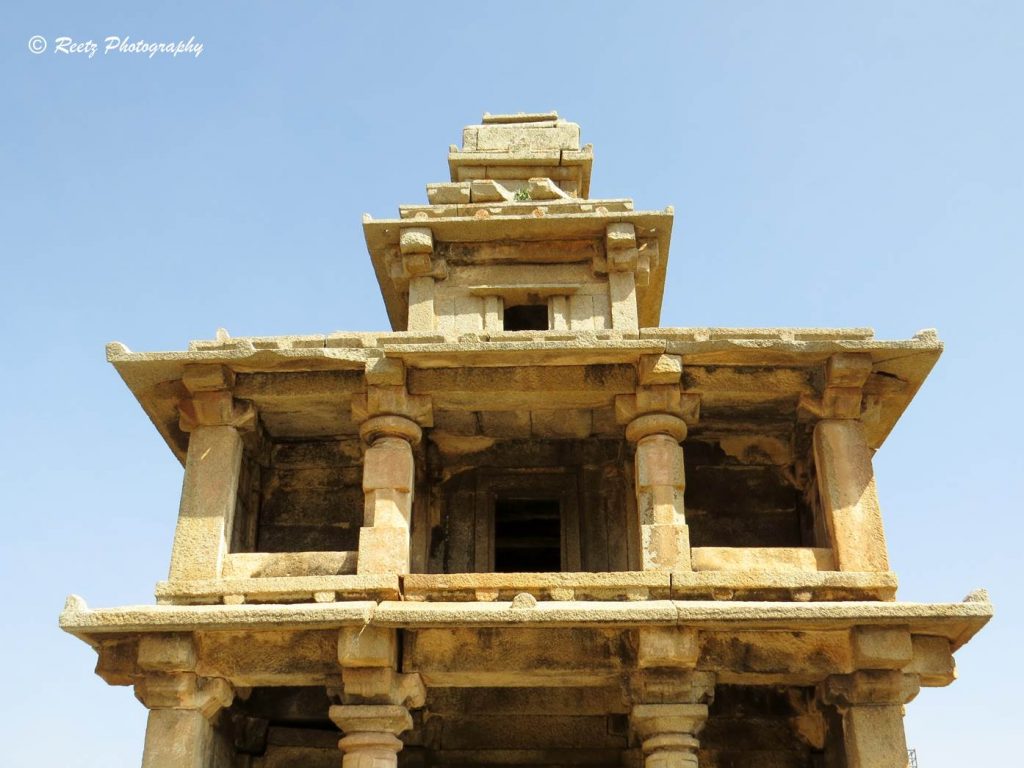
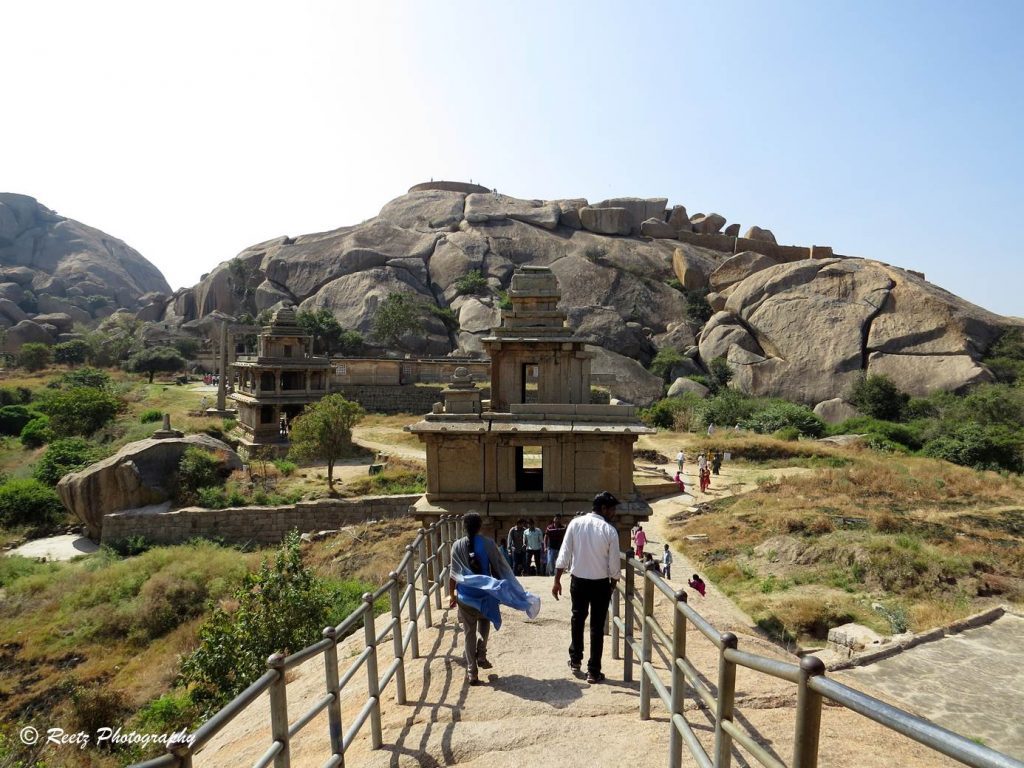
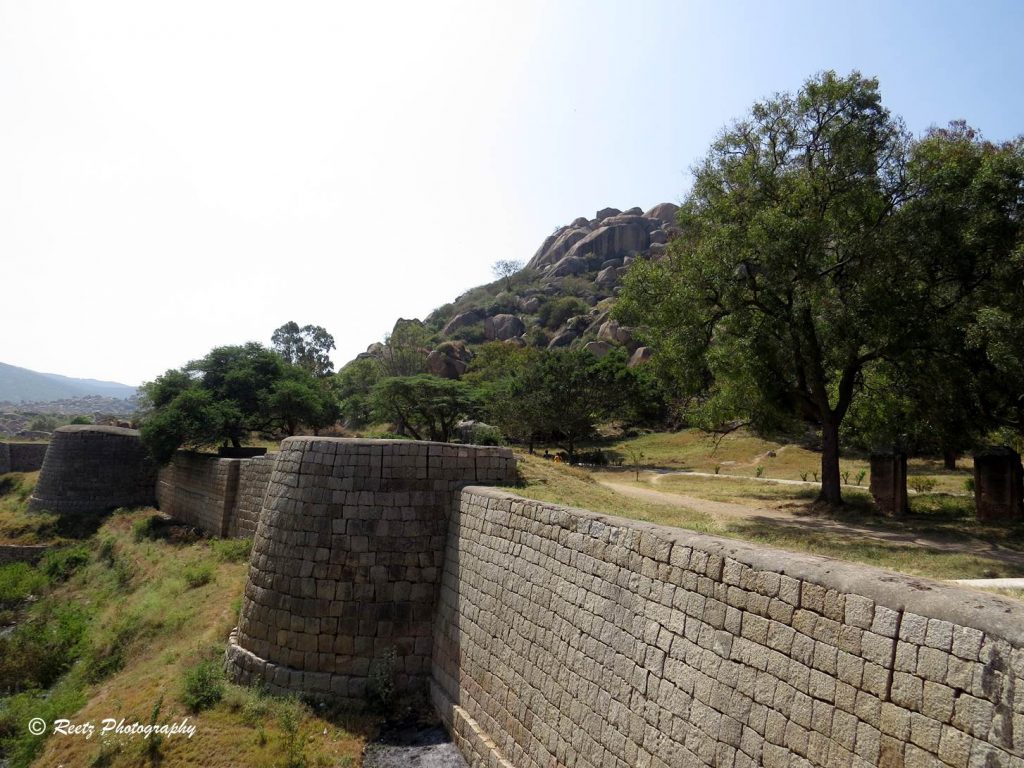
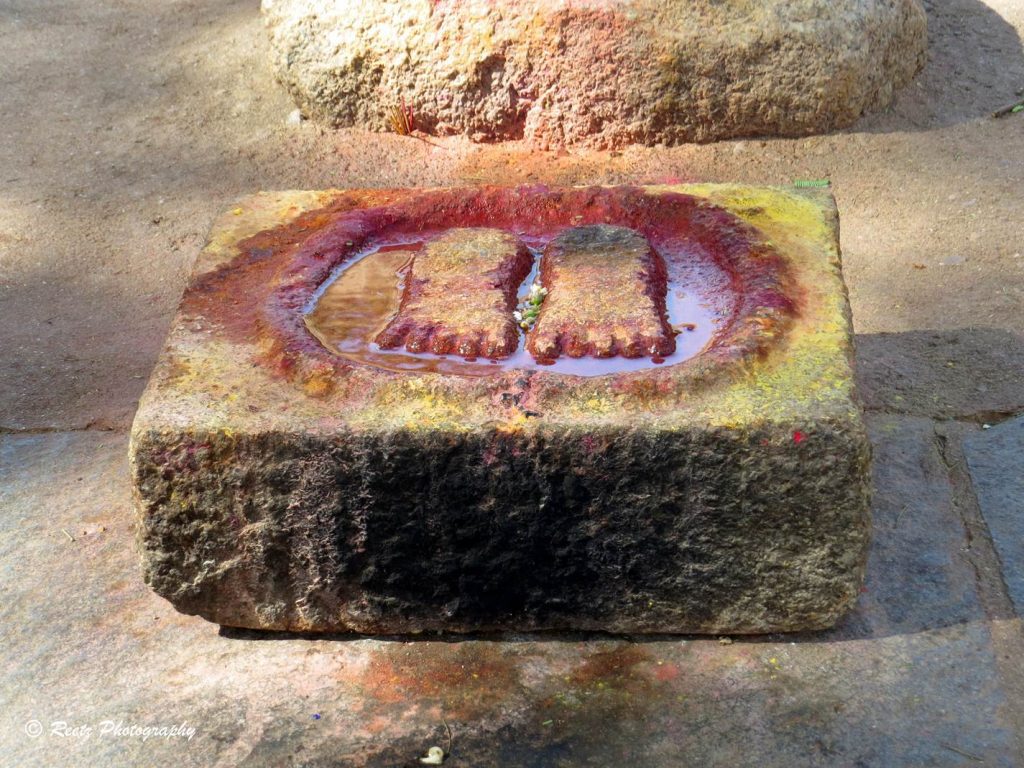



 By
By